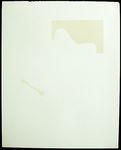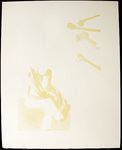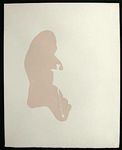DALÍ THE DIVINE COMEDY - Eames Fine Art Print Room 24 June to 25 July 2021 eamesfineart.com
←
→
Page content transcription
If your browser does not render page correctly, please read the page content below
SALVADOR DALÍ | THE DIVINE COMEDY
AN INTRODUCTION
The Divine Comedy is the vivid account of an imagined journey that the author – Dante Alighieri –
took on Good Friday 1300. Lost in a dark wood he is attacked by three beasts: a panther, a lion and
a she-wolf. Dante’s platonic love, Beatrice sends the classical poet Virgil to his aid and he guides him
through the wood and beyond to Hell (Inferno), Purgatory (Purgatorio) and Heaven (Paradiso). Dante
imagined Hell as a configuration of nine descending circles where the damned are tormented for all
eternity by terrible monsters and fiendish tortures. Dante and Virgil make their escape via a secret
pathway to Purgatory which is portrayed as a vast mountain surrounded by seven circles where
souls are purged of their sins before making the journey on to Heaven. To complete the journey and
arrive in Paradise, Virgil makes way for Beatrice who guides Dante in the company of angels to the
presence of God.
This epic verse is widely held to be Dante’s masterpiece and given the exalted position that the
author occupies in the Italian literary pantheon, its reputation has been lovingly burnished and
jealously guarded over the centuries. That a lavish illustration of The Divine Comedy was
commissioned by the Italian government to celebrate the 700th anniversary of Dante’s birth in 1950
was entirely appropriate. The award of the project to Spanish surrealist Salvador Dalí was met with
outrage however and the controversy led to questions in the Italian Parliament where the project was
denounced as a crime against the Italian State. In the face of such fierce opposition, the government
decided to terminate the project and Dalí’s contract was cancelled.
Dalí was already deeply immersed in the project however and had already completed a number of
watercolours to illustrate Dante’s verses. He decided to find another publisher for the project and
Joseph Forêt, Director of Parisian fine art publisher Éditions d’Art Les Heures Claires, agreed to
purchase the complete set of watercolours and secured the rights to publish Dalí’s Divine Comedy
as a limited edition book.
Between 1951 and 1960, in one of the most sustained creative achievements of his career, Dalí
completed 100 illustrations in watercolour, each a response to a verse or canto from Dante’s original
text. There are 34 illustrations for the realms of Inferno, and 33 each for Purgatorio and Paradiso. To
render the watercolours for publication, each image was painstakingly reinterpreted as a wood
engraving under Dalí’s strict supervision, a process that required 56 months of patient,
1continuous work. The end result, when finally published in 1964, was an astonishing publication that
succeeded in bringing the artform of the Livre d’Artiste (Artist’s Book) to as wide a collectorship as
possible at an affordable price. The publication comprised two editions: a French edition of 4,765
and an Italian edition of 2,900 for a total of 7,665. A ‘German edition’ of 1,000 was also compiled in
1974 by taking complete sets of the French edition and adding English and German translations
along with block signatures to the engravings with the approval and direct control of Dalí. The
complete edition information alongside a comprehensive register of Dalí block signatures used in the
publication of The Divine Comedy can be found in Eduard Fornés’ raisonné, Dalí – Illustrator which
serves as the definitive reference for these works.
FROM WATERCOLOUR TO WOOD BLOCK
Translating Dalí’s 100 watercolours for The Divine Comedy into wood engravings for printing was a
daunting undertaking. Master engraver Raymond Jacquet and his assistants Jean Taricco and Paul
Bassin were commissioned by Jean Estrade, the Artistic Director of Les Heures Claires, to work with
Dalí to create the engraved interpretations of his watercolours. This involved deconstructing each
image into separate colours and the carving of a single block for each colour. Each of these colour
proofs is known as a ‘decomposition’ and each watercolour would require more than 30 of these
decompositions to create the completed engraved translation.
Sequence of nine decompositions (there are 34 in total) and one stage proof showing development of the engraving
for ‘Imposter’ (Inferno: Canto 18). Images courtesy of Lockport Street Gallery.
2The process of engraving the blocks would start with the drawing of a perfect negative of the original
watercolour on to the block with carbon or lithographic pencil. The design would then be incised into
the block using a burin (engraving tool). Painstaking care was needed to ensure that the thickness of
the incised line would translate the colour of the watercolour correctly and so Dalí’s constant
attention and supervision was required throughout the four years it took to produce the
engraved proofs.
In total 3,500 engraved blocks were needed to complete The Divine Comedy and importantly,
Jacquet decided to print different colours from the same block, meaning that each block was
permanently altered during the printing process. This not only meant that there was simply no margin
for error in the printing of the edition but also ensured that the integrity of the edition was preserved
as subsequent unauthorised printings or forgeries made from the blocks would not
be possible. Another feature of the publication that demonstrated Jacquet’s commitment to the
highest of standards was his decision to use resin blocks. Traditionally, wood engraving was
executed on sections of box wood, however Jacquet’s preference for harder, more durable resin
blocks allowed for finer detail to be achieved in the engraving of the blocks and richer quality in the
final printing. This was crucial in ensuring that all impressions across both the French and Italian
editions were printed to a consistent, high standard.
3THE DIVINE COMEDY OF DALÍ
Few artists can rival Salvador Dalí in the spheres of self-promotion and myth-making. So successful
was he in these realms, that his art is almost obscured by them. There is a tendency in the collective
consciousness to reduce him down to his moustache and a few melting clocks. So, we can be
forgiven for forgetting that Dalí was, in fact, extremely gifted as both draughtsman and painter.
Nowhere in his body of work are these abilities more apparent than in the 100 prints he produced to
illustrate Dante’s monumental poem. In his depictions of Inferno, Purgatorio and Paradiso we are
confronted with images of tortured souls and sublime visions, executed in simple yet refined pen and
watercolour that stand in marked contrast to the slickness of his paintings and seem to possess an
uncharacteristic immediacy that belies their lengthy and, of course, controversial creation.
Dante Alighieri’s epic poem, in which his narrator, guided by the poet Virgil, first descends into the
depths of Hell, before ascending Mount Purgatory to finally arrive in Paradise, stands as one of the
undisputed masterpieces of world literature. Few works can be said to have influenced the
imagination of an entire civilisation on such a scale as has The Divine Comedy. It is daring, visceral
and continually shocking in its portrayal of the afterlife, and since its completion in 1320, it has not
ceased to furnish other artists with inspiration.
Botticelli, Blake, Doré – Dalí, at first, may seem a strange name to add to the list. After all, the
religious aspect of his life is yet another facet obscured by the artist’s own image-making. It may
therefore come as a surprise to some that, in 1950, Dali was granted an audience with the pope.
More surprising still, the pontiff consented to the enfant terrible painting Christianity’s most sacred of
scenes, the Immaculate Conception. That same year, encouraged by, and perhaps not a little
jealous of, this papal approval and to commemorate the 700th anniversary of their nation’s greatest
poet, no lesser body than the Italian government commissioned Dalí to produce a series of
illustrations for the Divine Comedy. Such was the furore created by this commission that some in the
Parlamento accused the government of perpetrating a crime against the state, and in order to spare
itself a lawsuit, the commission was rescinded.
One might expect that to a provocateur such as Dalí this censure would only serve to fire his resolve.
However, the enormity of this task, the artistic labour it required, clearly demonstrates that to Dalí
there was something more serious at stake. To turn 100 watercolours into woodcuts is no small
undertaking. Indeed, to complete the series, no fewer than 3,500 woodblocks were required. It took
master engraver Raymond Jacquet five years to accomplish this feat, with Dalí at hand to approve
4each and every step. It is hard to not draw a parallel between Dante the wandering poet and
Dalí the rejected illustrator, two spurned exiles too committed to their artistic projects to
give way.
It has been commented that Dalí’s artistic vision succeeds most when applied to smaller works,
that his self-described paranoiac imagination is charged and heightened when somewhat
confined. That is more than evident in his Divine Comedy. Yet there is something else at play,
too. Hitchcock, Disney, Coco Chanel: collaboration was an integral part of Dalí’s career. Meeting
another’s imagination halfway allowed Dalí to slip his own claustrophobic concerns. And who
can claim to have had as profound an imagination as Dante? Motifs we recognise as Dalí’s, his
featureless faces, distorted limbs supported by crutches, windowed torsos, shattered, ethereal
beings here transcend Dalí’s own Freudian obsessions to make us see afresh the horrors of Dante’s
hell, the overawing visions of his heaven.
The Divine Comedy is celebrated for what has come to be known as contrapasso, the audacious
ingenuity with which Dante fitted a crime to its punishment. More than any of the poem’s many
illustrators, Dalí fits Dante’s vision. The inferno is to some extent already an absurd, surreal
nightmare; in the act of translation from word to image, it is oftentimes difficult to pinpoint where the
early Renaissance Poet ends and the Surrealist artist begins. That the two possess a shared
sensibility in their conception of hell and purgatory as intellectual torture, body-horror and farce, we
might expect. Dalí’s Paradise, however, offers up something we are much less likely to anticipate.
The delicacy of line and colour on display here is unique in his oeuvre. All in all, it is something of
a revelation.
Luke Wallis, June 2021
5Eames Fine Art Ltd
Gallery: 58 Bermondsey Street, London SE1 3UD
Print Room: 159 Bermondsey Street, London SE1 3UW
Studio: Ground Floor, 54-58 Tanner Street, London SE1 3PH
T: 020 7407 1025 | 020 7407 6561 | 020 7043 7571 M: 07970 105 508 | 07884 433 578
E: v i n c e n t @ e a m e s f i n e a r t . c o m | r e b e c c a @ e a m e s f i n e a r t . c o m W: e a m e s f i n e a r t . c o mYou can also read



























































